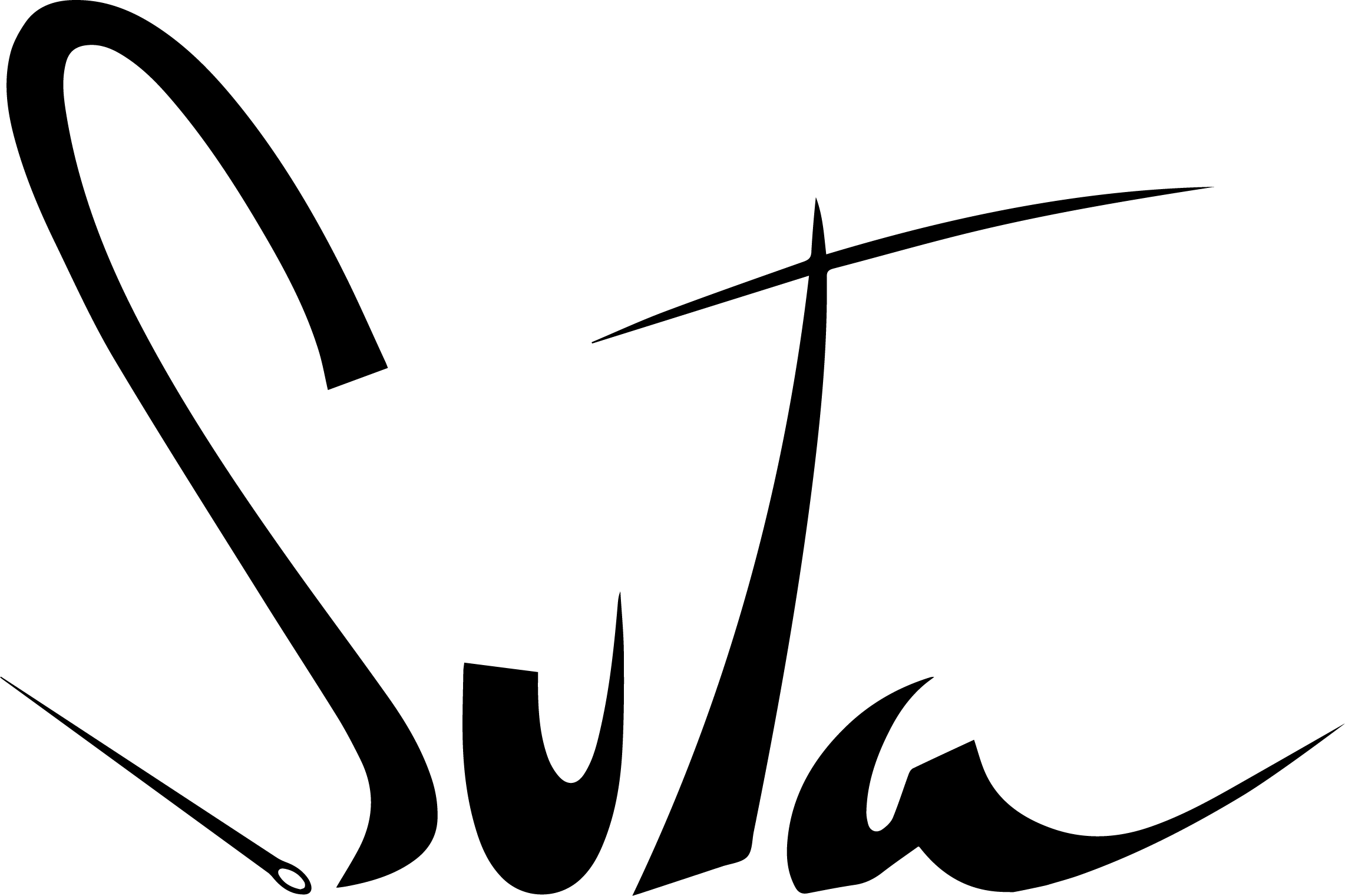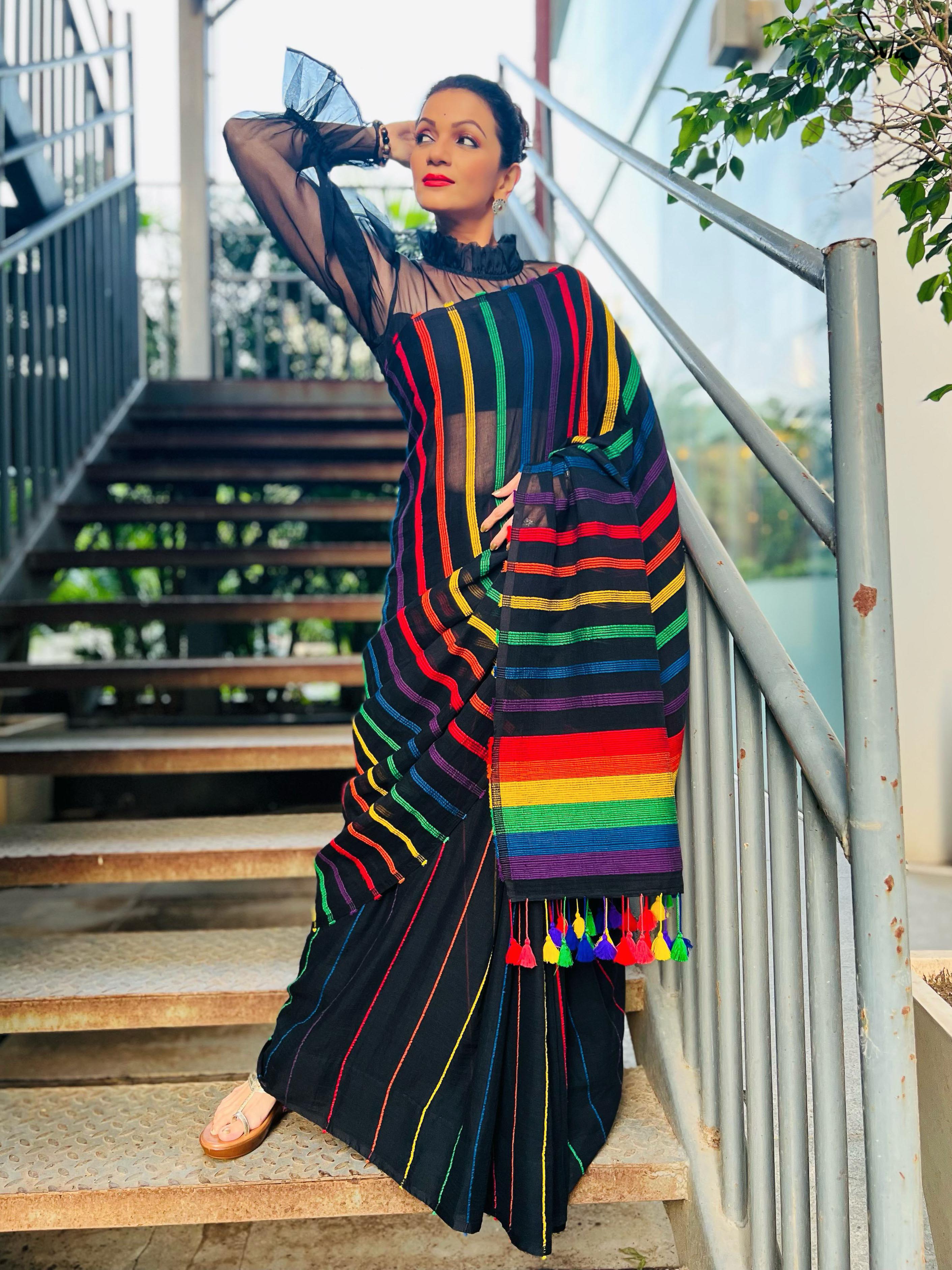
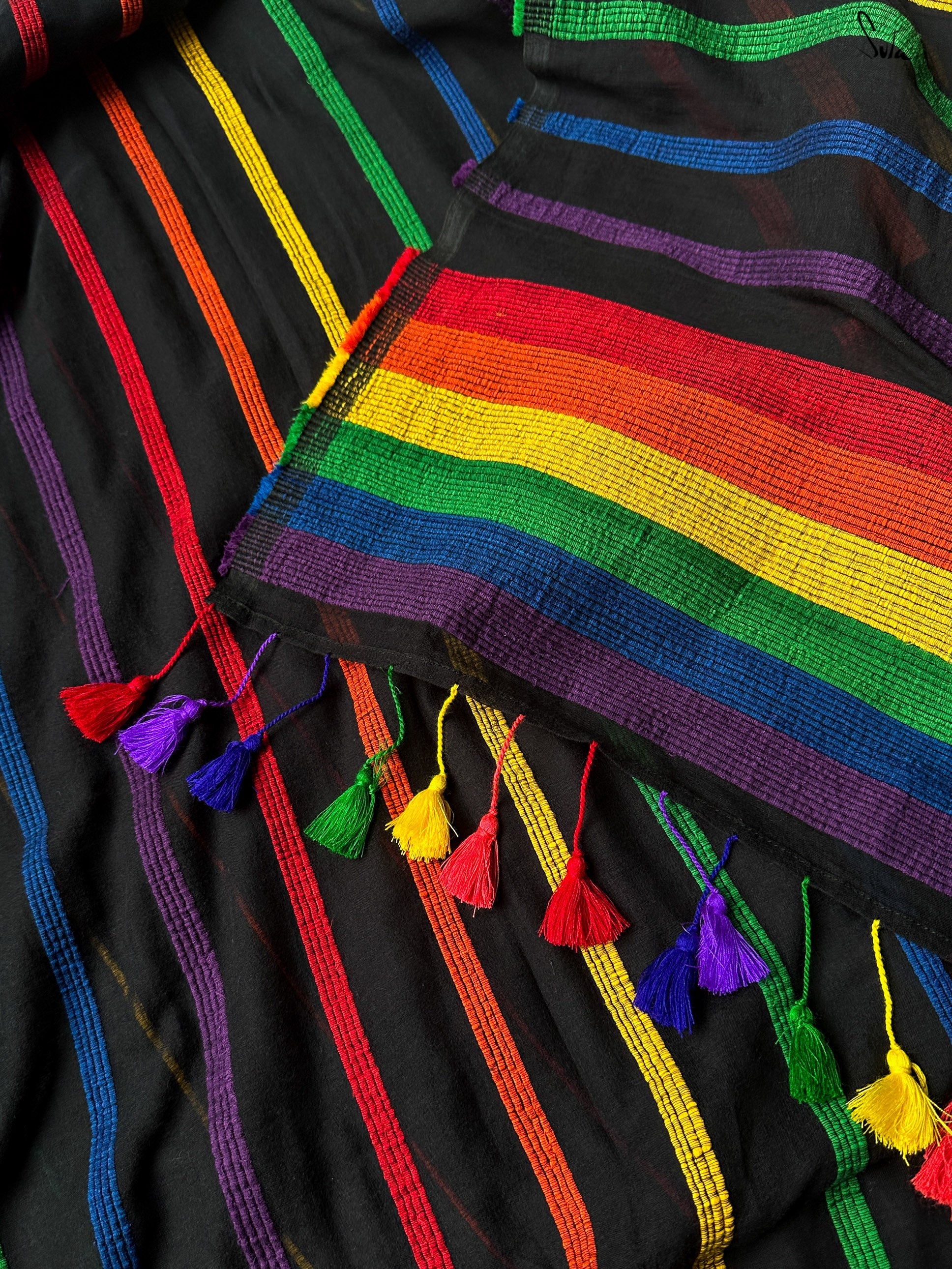
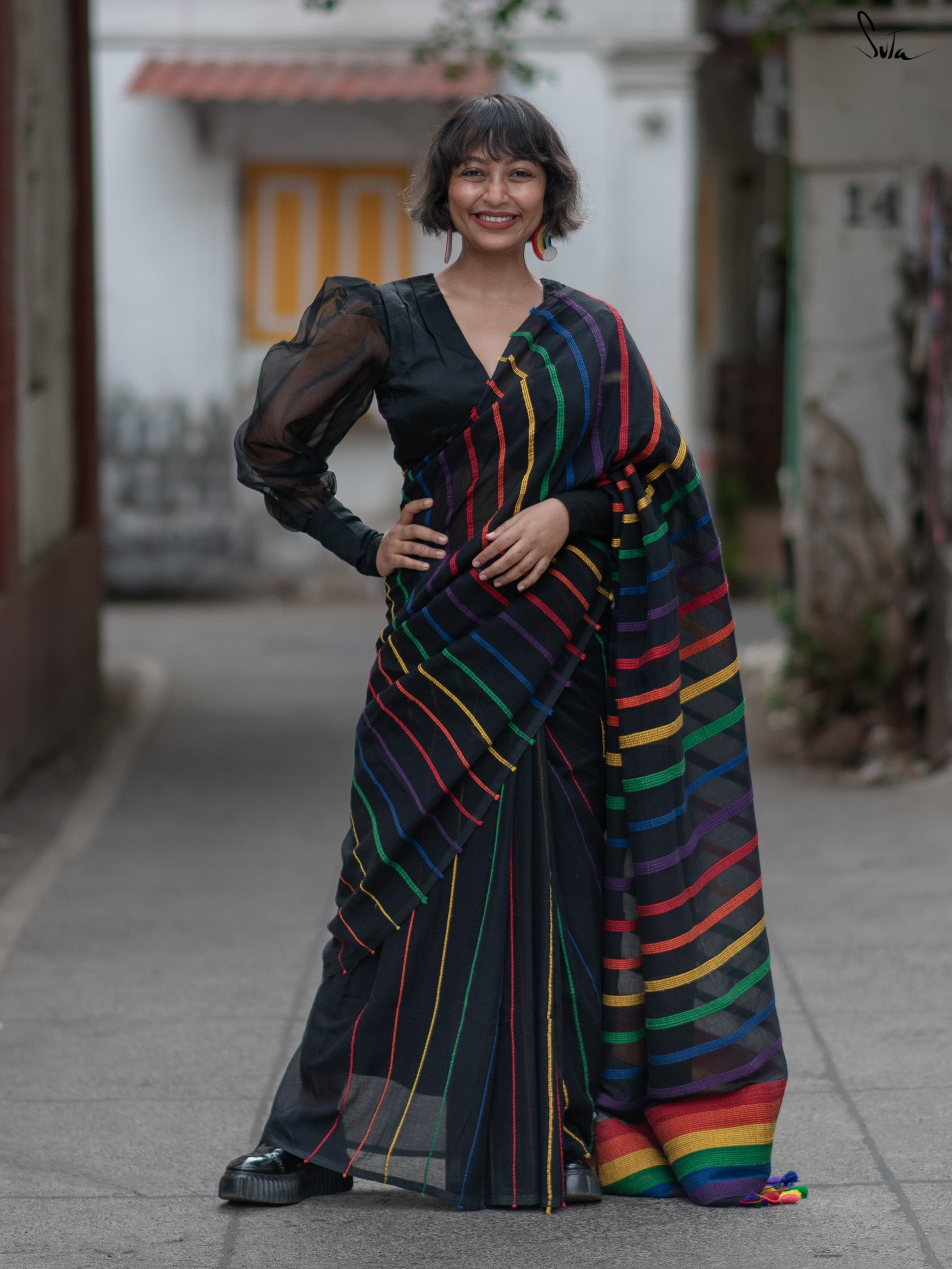
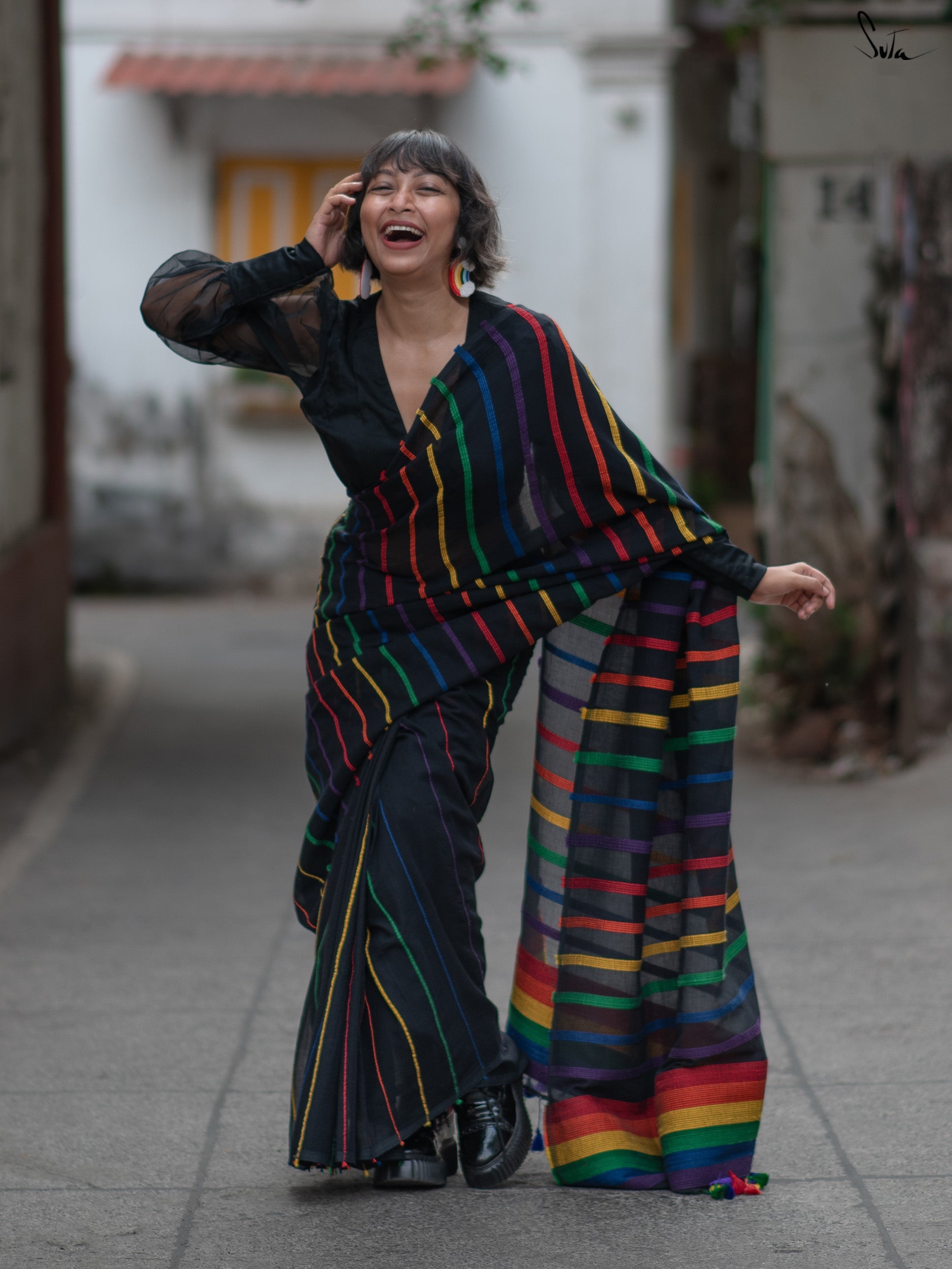
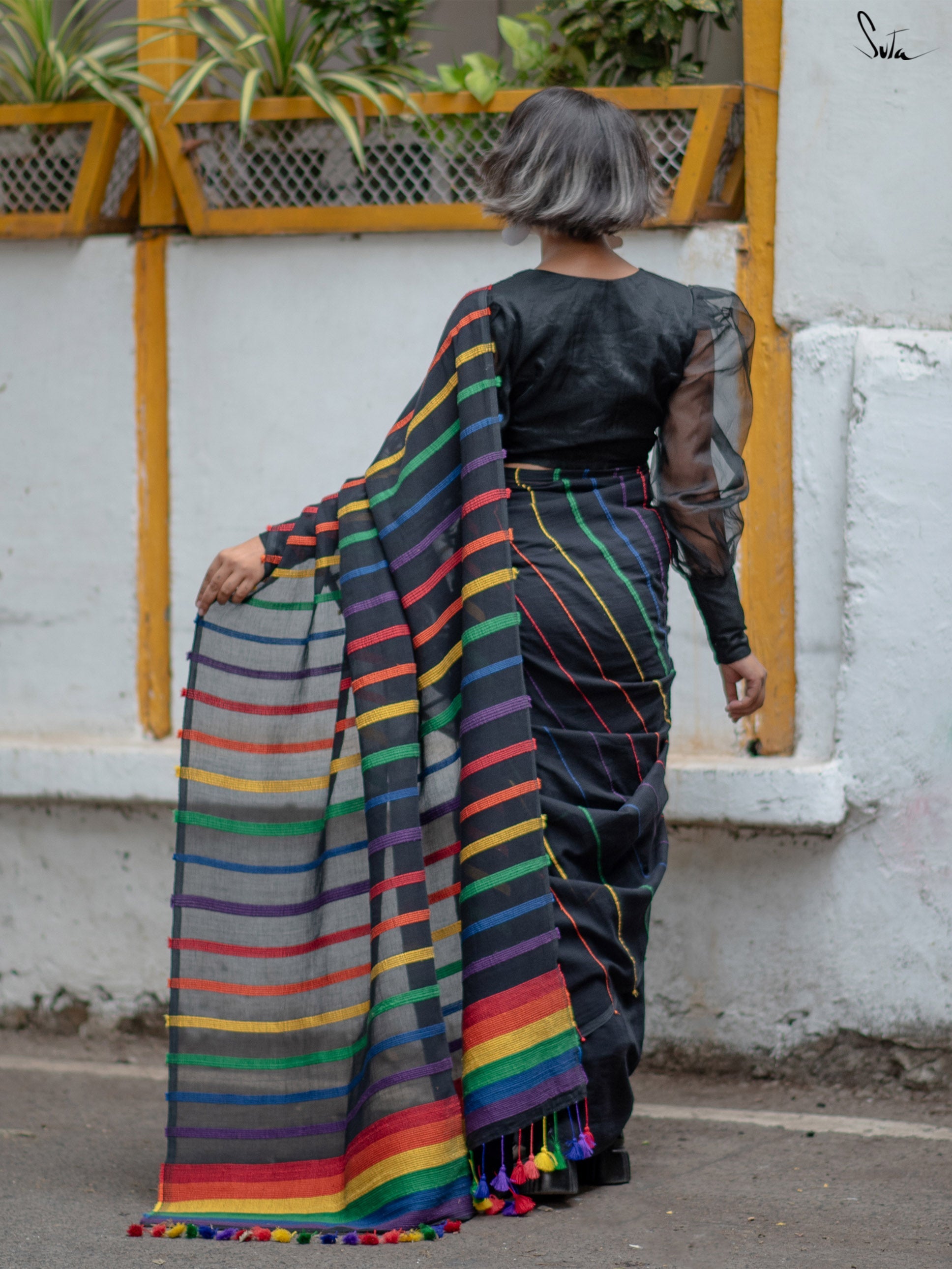
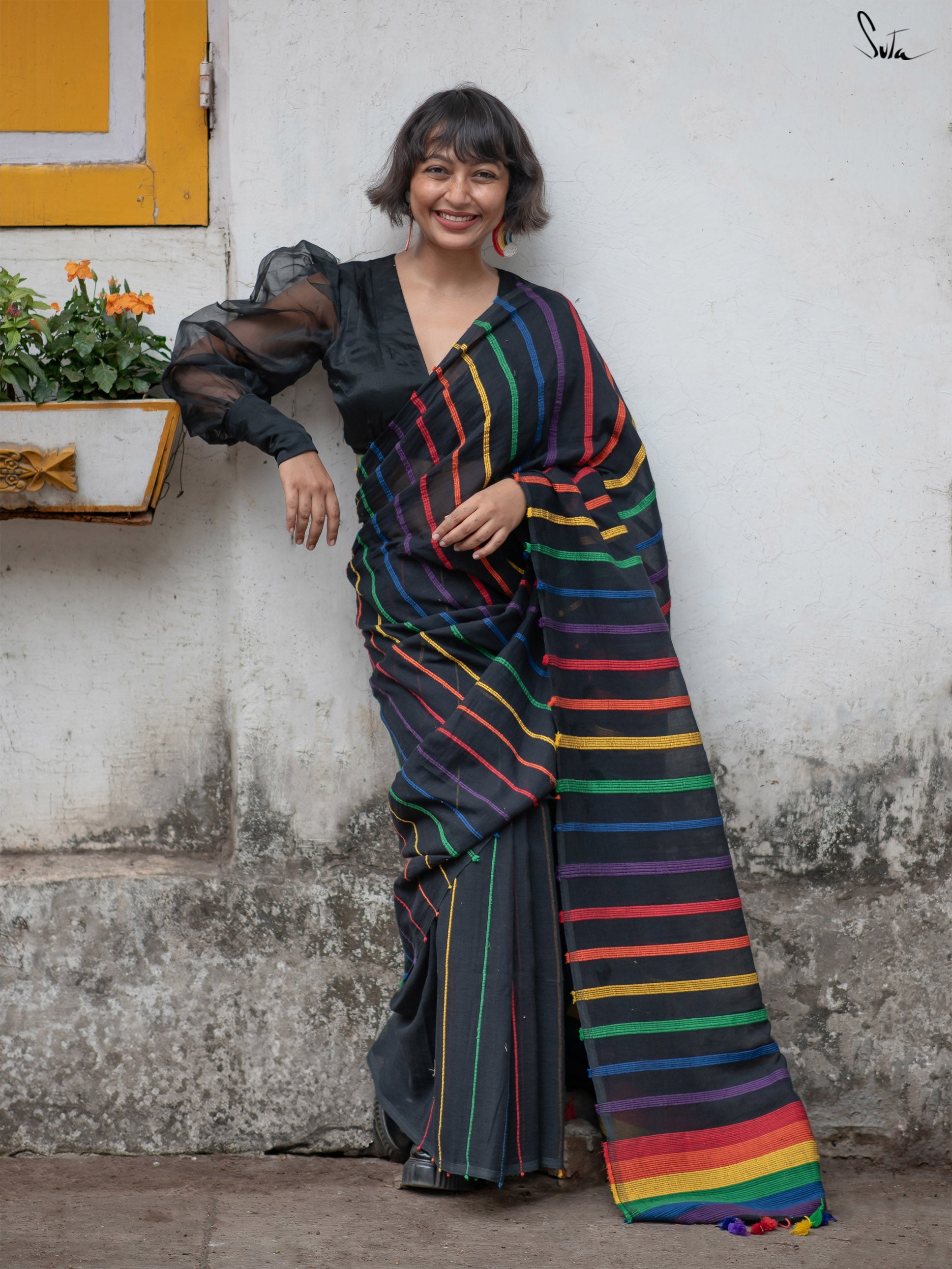
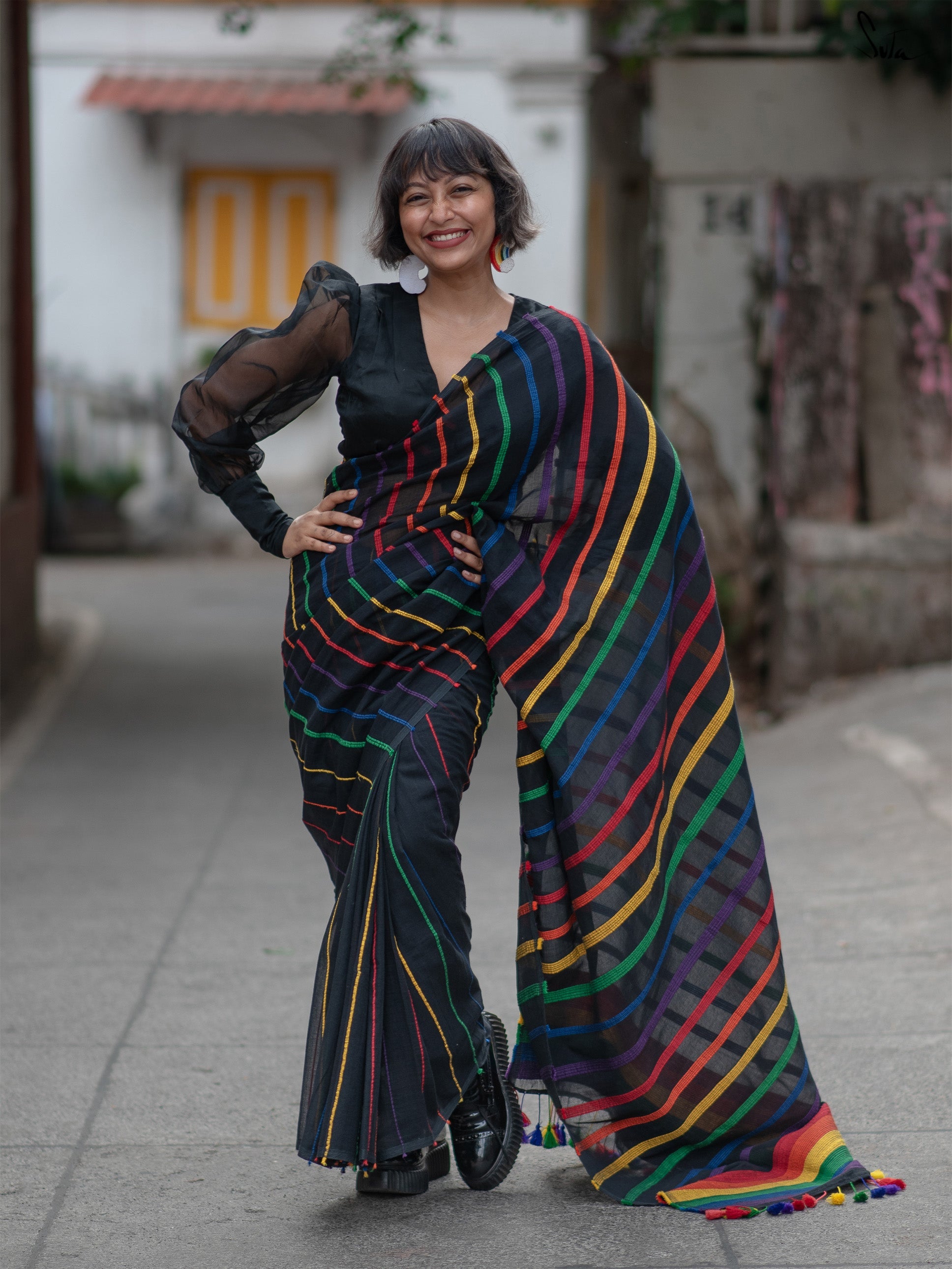
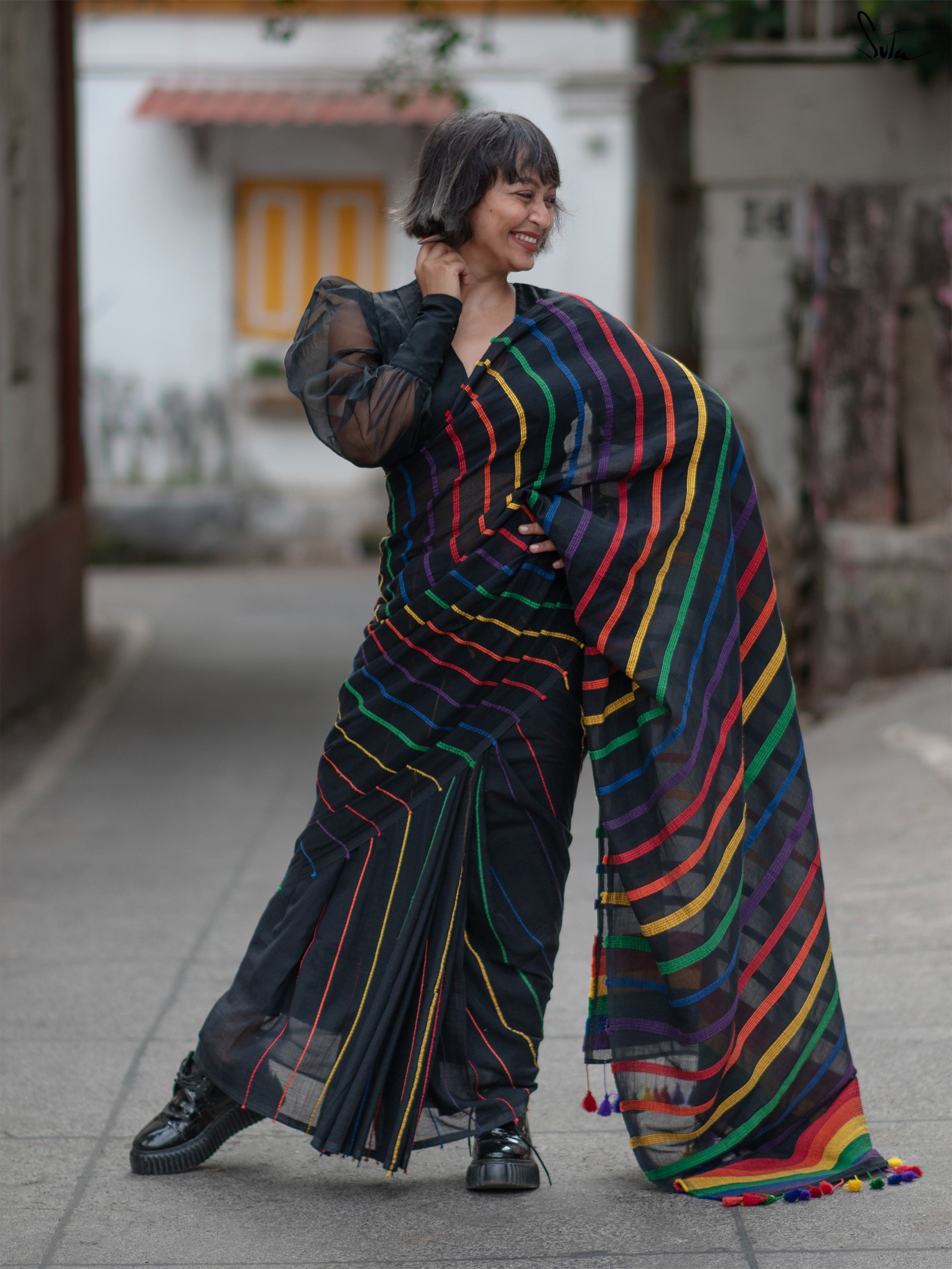
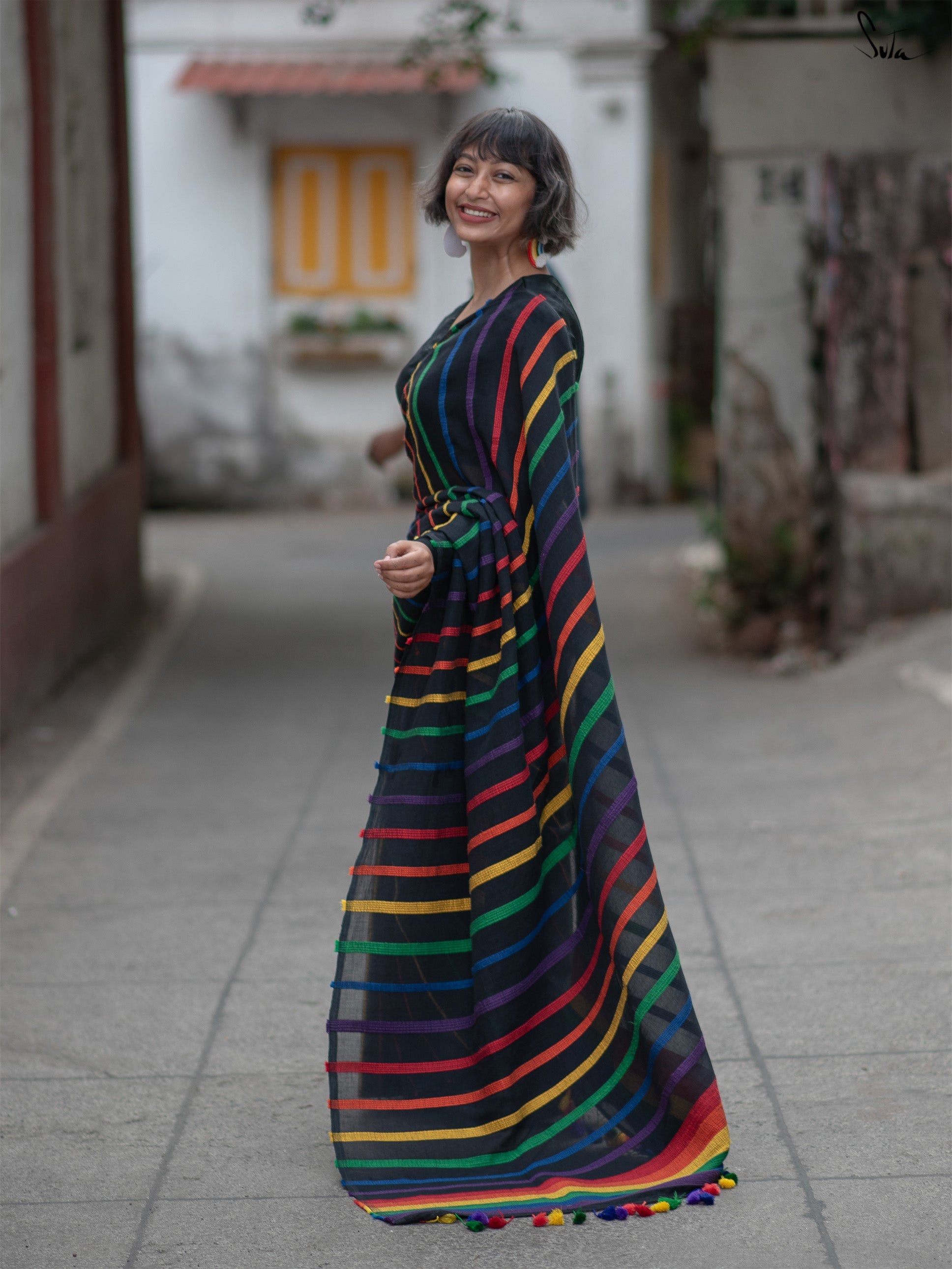
High on Khesh
Product Type: Saree
Length: 6 m (600 cm) ; Width: 1.118 m (118 cm)
Blouse Piece: No
Fabric: Mul Khesh
Colour: Black
Wash Care: Gentle Handwash separately
Blouse: The model is wearing XS size blouse called Ghana Saaya
Disclaimer: The pictures are clicked in daylight. Colour may vary slightly from the image due to the screen brightness
Note: Please note that this saree comes with a fall and edging.
What You will Receive: 1 Saree
SKU: SUTAMIH432
We're incredibly proud of this creation! This saree features elegant stripes flowing across the entire saree, crafted from something truly special from upcycled sarees.
We have taken pre-loved Mul cotton sarees, torn them into strips, and used them as an extra weft, weaving them into something entirely new and beautiful.
Khesh is a testament to recycling and upcycling. The warp uses new fibres, while the weft breathes new life into old fabrics. This process is intricate and time-consuming, making each saree a unique and sustainable treasure.
Vibrant tassels adorn the hem, adding a touch of whimsy and movement with every step.
Soft and breathable like a summer breeze, this upcycled masterpiece is a joy to wear for any occasion.
While we speak of sustainable fashion and up-cycling in the present day and age, weavers have been carrying on the tradition of up-cycling for many decades. The beautiful fabric of khesh is an example of old-world charm remaining as ravishing as ever in any form. The process of khesh weaving is pretty simple. On the handloom, new yarn forms the warp and torn strips of old sarees form the weft. However, the stunning amalgamations that this simple process can produce are truly extraordinary. What started in the early 1920s at Shilpa Sadan that was set up by Rabindranath Tagore near Shantiniketan as a vocational training centre is now a design that symbolises the beauty in the simplicity of the Indian way of living. The traditional weavers in Birbhum pass on their craft to consequent generations and keep the spirit alive.
The old sarees that are torn into strips are got either from different collections centres or from the excess of sarees that the weavers have that haven't been sold. Once the old sarees are collected, shredding them into thin strips by hand is a process that is almost as difficult as the weaving. Cotton sarees are preferred because they are easier to tear when compared to synthetic ones. The weavers have developed short-cuts to make the tearing process easier. They first tear the sarees into 6 or 7 broad strips. Then, cuts of the desired breadth are made at the edge of each strip. Following this, they hold the alternate edges on one hand and the rest in the other hand and pull in opposite directions. Once torn, these strips are weaved as khesh fabric. The outcome of the final fabric can never be predicted beforehand. It is always like a beautiful kaleidoscope churning out different combinations of the colours it contains. This surprise element is the beauty of the fabric.
Often, mul yarn is used in the warp and the resultant fabric is called mul
Country of Origin: India
Packed By: Suta Pvt. Ltd.
Registered Address: Om ShivAmbika Co-Op Hsg Soc, Kalina, Santacruz East, Mumbai-400098
For any queries, please contact us at info@suta.in.
If you need to cancel an order, please do so before it is shipped to receive a full refund. Once the order is shipped, it cannot be cancelled, and we will be unable to refund anything.
If a defective product is received, contact us on info@suta.in with your Order ID and a snapshot of the defect within 48hrs of delivery. We will provide either a credit note or a refund for the defective product after investigation; but we will not be able to provide a replacement.
Choose options









